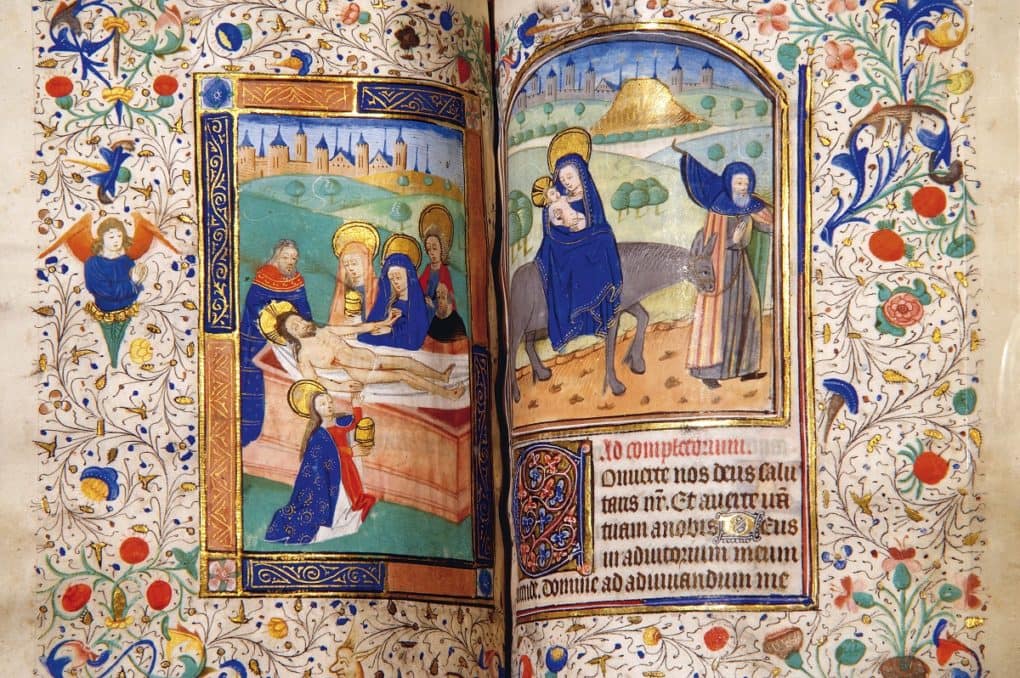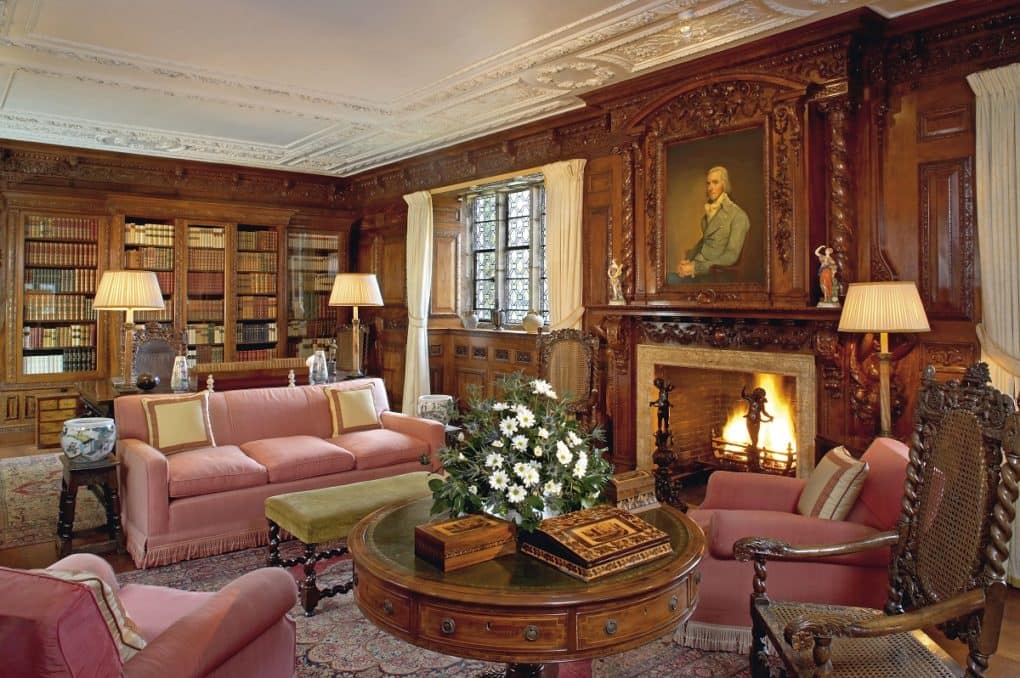

The theme for this week’s #TudorTuesdays with Historic Houses is books and libraries.
Hever Castle is fortunate to house two of Anne Boleyn’s prayer books, on display in the ‘Book of Hours’ room. She wrote in these beautifully illustrated books and they bear her signatures.
These personal prayer books were popular in England from the 13th century until the Reformation and earned the name ‘Book of Hours’ from the short services to the Virgin Mary which were read at eight fixed hours during the day – including Matins and Vespers.
These books also contained a calendar of church festivals, psalms, prayers, favourite saints and services for the dead. The earliest one on display at Hever was handwritten on vellum in Bruges, c. 1450, and bears the poignant inscription Le temps viendra (the time will come), Je Anne Boleyn.
The other is believed to be the prayer book Anne took with her to her execution at the Tower and bears the following inscription: ‘Remember me when you do pray that hope doth lead from day to day. Anne Boleyn.’ – ‘Book of Hours’, c.1528.

Overlooking the moat and Anne Boleyn’s orchard, the stunning Library originally contained 2,500 books which were bound in calf and Moroccan leather for former owner William Waldorf Astor, and gilt-tooled with his coat of arms.
Many of these books were printed on private presses in Paris and New York during the 17th, 18th and 19th centuries. The bookcases in the Library are inspired by those owned by the diarist, Samuel Pepys.
In Tudor times this room was most likely an estate office and Astor tried to recreate a sense of its history when he chose it as his library. The carvings are in the style of Grinling Gibbons and made from a wood called sabicu, which is harder than ebony and dense enough to sink in water.
The ceiling is copied from Hampton Court Palace and the circular mahogany ‘drum’ table dates from around 1820.
Above the fireplace is a portrait of Johann Jakob Astor, great-grandfather of William Waldorf Astor and founder of the family’s fortune in the late 18th century.
If you enjoyed this item on books and libraries then why not discover the previous #TudorTuesdays news items:
• Elizabeth I
• Tudor Chapels
• Tudor Windows
• Tudor Tapestries
• Tudor Chimneys
• Tudor Panelling
• Tudor Knot Gardens
• Tudor Childhood
• Tudor Dining Rooms
• Tudor Rose Gardens
• Henry VII
• Henry VIII
• Mary I
Book your visit to Hever Castle & Gardens.
Within the grounds of the Hever Castle Estate, there are two opportunities for you to stay the night with us.
Hever Castle has played host to many important events and celebrations for over 600 years. In 1903 when William Waldorf Astor set about restoring Hever Castle to its former glory, he added the Astor Wing, to accommodate his family and guests, before creating a lake and the spectacular Italian Garden to house his impressive collection of ancient Greek and Roman statuary.
There are multiple places to eat & drink across the Hever Castle Estate. Select between the Castle & Gardens and Golf Club below to discover more.
Set in the mature grounds of the Hever Castle Estate, Hever Castle Golf Club is a 27 hole Kent golf course that will encourage and inspire all golf enthusiasts.
Set in the mature grounds of the Hever Castle Estate, the Wellbeing Centre consists of five smart treatment rooms.